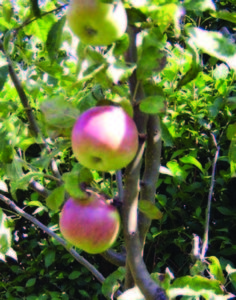Food Production: Growing fruit trees
go.ncsu.edu/readext?645792
en Español / em Português
El inglés es el idioma de control de esta página. En la medida en que haya algún conflicto entre la traducción al inglés y la traducción, el inglés prevalece.
Al hacer clic en el enlace de traducción se activa un servicio de traducción gratuito para convertir la página al español. Al igual que con cualquier traducción por Internet, la conversión no es sensible al contexto y puede que no traduzca el texto en su significado original. NC State Extension no garantiza la exactitud del texto traducido. Por favor, tenga en cuenta que algunas aplicaciones y/o servicios pueden no funcionar como se espera cuando se traducen.
Português
Inglês é o idioma de controle desta página. Na medida que haja algum conflito entre o texto original em Inglês e a tradução, o Inglês prevalece.
Ao clicar no link de tradução, um serviço gratuito de tradução será ativado para converter a página para o Português. Como em qualquer tradução pela internet, a conversão não é sensivel ao contexto e pode não ocorrer a tradução para o significado orginal. O serviço de Extensão da Carolina do Norte (NC State Extension) não garante a exatidão do texto traduzido. Por favor, observe que algumas funções ou serviços podem não funcionar como esperado após a tradução.
English
English is the controlling language of this page. To the extent there is any conflict between the English text and the translation, English controls.
Clicking on the translation link activates a free translation service to convert the page to Spanish. As with any Internet translation, the conversion is not context-sensitive and may not translate the text to its original meaning. NC State Extension does not guarantee the accuracy of the translated text. Please note that some applications and/or services may not function as expected when translated.
Collapse ▲
Image by Gavin Andrew Stewart CCBY2
Growing fruit is an option for anyone in North Carolina, though the types of fruit you can grow may vary depending on your location. In the NC piedmont, we can produce a variety of fruits, such as apples, figs, pears, persimmons, peaches, and plums, to name a few. Growing fruit trees requires a time commitment, and here are a few steps for success.
- Site selection is a crucial and often overlooked component. Consider available space and available sunlight. Is there is anything that will interfere with tree planting and growth? This might include buildings, other trees, power lines, and other utilities, such as cable, internet, phone, gas, water, and sewer. Before digging, call North Carolina 811, which will contact the relevant companies to mark infrastructure that could be damaged (or cause you dam-age) during digging.
- Sunlight is critical for fruit production, and fruit trees require a minimum of 6 hours of direct sun per day. So ensure that neither other trees nor structures are casting shade on the proposed growing area.
- Always reference your soil sample report to identify what, if any, lime needs to be added to the soil. A soil pH of 6.0 to 6.5 is optimum for fruit tree growth. If you have questions about soil sampling, contact your local Cooperative Extension Service agent.
Now the fun part: picking which tree to grow. Pick the one you or your family will enjoy growing and eating. For more information on fruit trees, see the “Tree Fruits and Nuts” chapter of the NC Extension Gardener Handbook and the NC State Extension comprehensive resources for fruit trees.
—Bryan Hartman
Additional interesting articles are linked from the index page
Extension Gardener Newsletter


